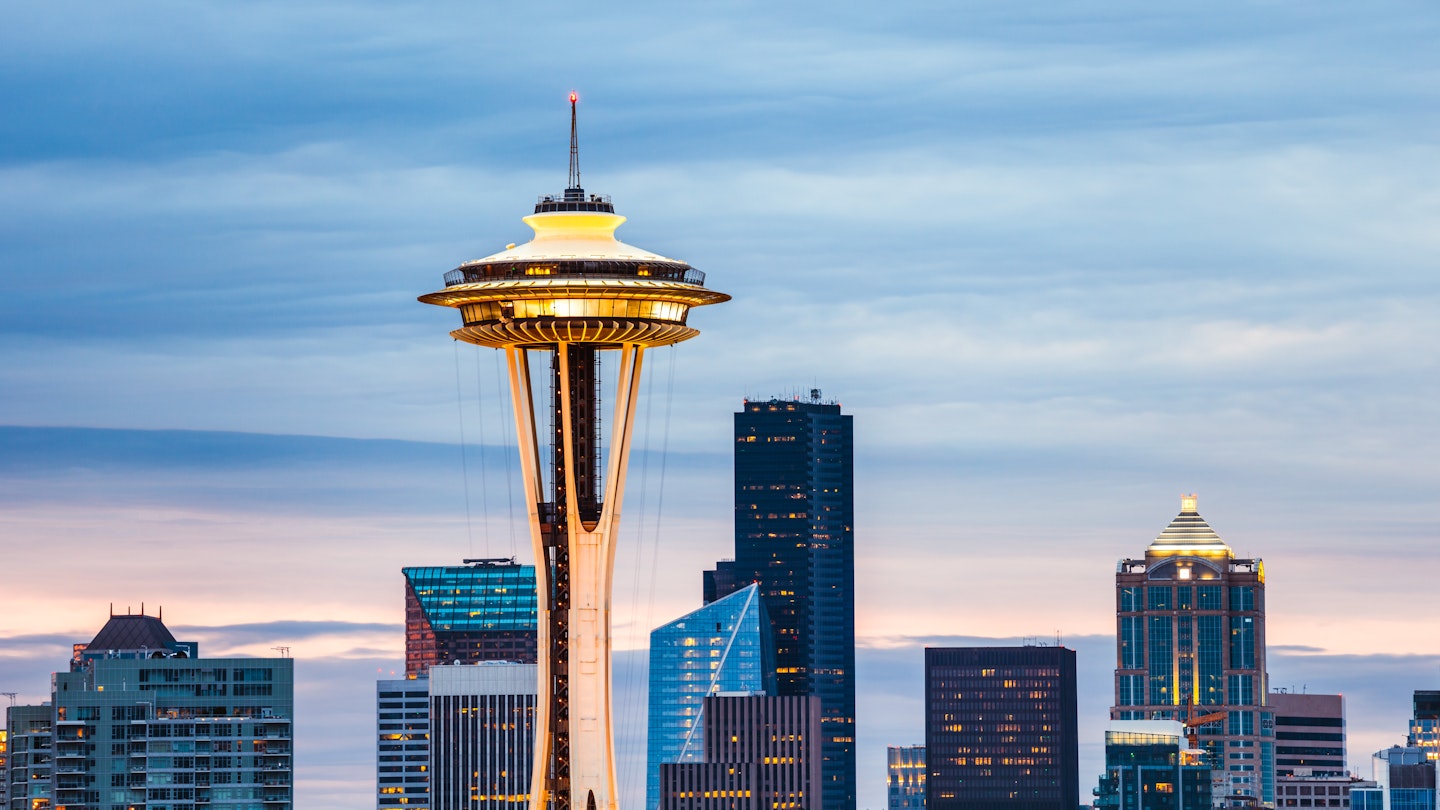The Space Needle: A Seattle Landmark
Before Amazon transformed online shopping, before Kurt Cobain introduced grunge rock, and even before Starbucks served its first cup of coffee, the Space Needle emerged as an iconic symbol of Seattle. Amidst countless events that have shaped Seattle’s culture and skyline, the Space Needle has endured as a notable fixture.
The completion of a significant renovation, termed the “Spacelift,” in 2018 catapulted this landmark into modernity, leaving visitors wondering if they had entered the future.
Note: the Space Needle is open with limited ticket availability. Check the website before visiting, and adhere to all local COVID-19 guidance.
The Vision Behind the Space Needle
Opening during the 1962 World’s Fair, the Space Needle quickly became a recognizable symbol across the US, akin to other famous structures like the Eiffel Tower in Paris.
Gary Noble Curtis, a structural engineer from the original construction, noted, “It looked really exotic, but the engineering was not exotic. It was brutal.” He reflected on the urgency of the construction, where the Space Needle was completed merely days before the fair’s inauguration.
The tight schedule reflected the passion and determination of a young workforce eager to shine a spotlight on Seattle. Many other structures from that World’s Fair still exist, such as the Monorail and the Pacific Science Center. During an era captivated by the Space Race, the innovative architecture at the Seattle Center felt like a sci-fi vision realized.
Modern Innovations and Upgrades
For many years, the Space Needle remained largely unchanged aside from minor internal modifications. However, significant renovations began around its 50th Anniversary celebration in 2012. As noted by historian Knute Berger, conversations about updating the iconic structure commenced during this time to ensure its continued relevance.
According to Berger, the goal was to prepare the Space Needle for the next 50 years, evolving beyond its original design while retaining its functionality and excitement.
A Vision for the Future
In a bold endeavor, designers replaced outdated features with 176 tons of glass, granting expansive views of Seattle and its surroundings. Berger emphasizes that the beauty of Seattle is integral to the experience of visiting the Space Needle.
The transformation also introduced a rotating glass floor that allows visitors to look directly down 500 feet, showcasing an innovative design that sets the Space Needle apart from other landmarks. Engineer Wade Morris highlighted that exposing the drive mechanism is a unique aspect not typically present in similar structures.
The Original Spirit Reclaimed
The renovation extends beyond aesthetics; it represents a larger narrative about Seattle’s identity as a tech city. The excitement surrounding modern glass technology infuses new aspiration into the landmark, elevating its significance in contemporary culture.
As Seattle leads tech innovation, particularly with companies like Blue Origin working towards space exploration, the revamped Space Needle stands as a beacon of progress and hope for the future.
Article first published in October 2018, and last updated in September 2020.




